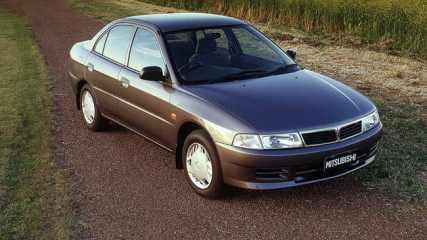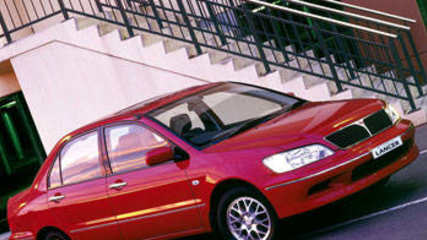Used Mitsubishi Lancer review: 1996-2004
By Graham Smith · 06 Aug 2005
The current focus on petrol prices is apparently causing a shift in buying habits. If the latest new car sales figures are to be believed, there is a significant trend towards smaller, fuel-efficient cars like the Mitsubishi Lancer.MODEL WATCHCompared to other small cars, the Lancer isn't the most stylish. In an era in which the carved-from-stone look, with crisp edges and sharply defined shapes, dominates, the soft and cuddly Lancer looks as though it has been styled for an older, conservative buyer.The problem with styling, though, is that it moves in and out of fashion. But the Lancer has stood the test of time, and still looks appealing, even if it feels a bit like an old sock.There were three body styles on offer in the Lancer catalogue: the four-door sedan, wagon and two-door coupe. If the sedan and wagon find favour with young families and older couples, the sleek, sporty coupe is the one for younger buyers.The GLi opened the range in sedan and coupe form, and came standard with power steering, cloth trim, full wheel trims, and a fairly basic two-speaker sound system.For more, there was the GLXi sedan and wagon which came with central locking, power mirrors and four-speaker sound. For coupe extras there was the sporty MR with alloy wheels, side body skirts, fog lamps, power windows and a rear spoiler.In the GLi, the power initially came from a 1.5-litre single overhead camshaft fuel-injected four cylinder engine, which pumped out 69kW at 550rpm and 126Nm of torque, but GLXi and MR buyers had the extra punch of a 1.8-litre SOHC engine which boasted 86kW at 5500 rpm and peak torque of 161Nm.A 1999 update saw the 1.8-litre engine replace the 1.5-litre unit in the GLi sedan and coupe. Both had the choice of a five-speed manual gearbox or four-speed auto and drove through the front wheels.IN THE SHOPThe Lancer has a reputation for reliability. Mechanics who work on them say they give little trouble. But they say it is important to change the cam timing belt at 90,000km, as per Mitsubishi's recommendation. Generally, the Lancer is a strong little car that stands up well in crash testing, making it a safe choice for young drivers.The current focus on petrol prices is apparently causing a shift in buying habits. If the latest new car sales figures are to be believed, there is a significant trend towards smaller, fuel-efficient cars like the Mitsubishi Lancer. If there's a down side, it is that they're noisy, which can trick you into thinking something is wrong. Again, experienced mechanics say it's not unusual for owners to think they've done a wheel bearing when it's only road noise. It's simply that car companies tend not to spend much on sound proofing small cars and in most that means there's a lot of extra noise.CRUNCH TIMEThe Lancer was rated about average in the latest annual survey of real life crashes. Crash protection improved with the addition of a driver's airbag in the GLi and GLXi in 2001, with the sporty MR coupe getting dual airbags at the same time.OWNER'S VIEWLouise Ryan bought her Lancer GLi coupe new, back in 2004. She liked its looks, thought the performance was good, and preferred the idea of buying a new car rather than the risk of purchasing a used car.In the 11,000 km she has now done in it, she's had no problems and is happy enough with it to consider buying another one. Louise's only complaint is that there is little room in the rear, so it's a bit of a squeeze when she needs to carry passengers.MITSUBISHI LANCER 1996-2004Sporty coupe favoured by young buyersFour cylinder fuel economyZippy performanceSuffers a high level of road noiseReliable engines and gearboxesRating14/20 Reliable small car with miserly fuel








